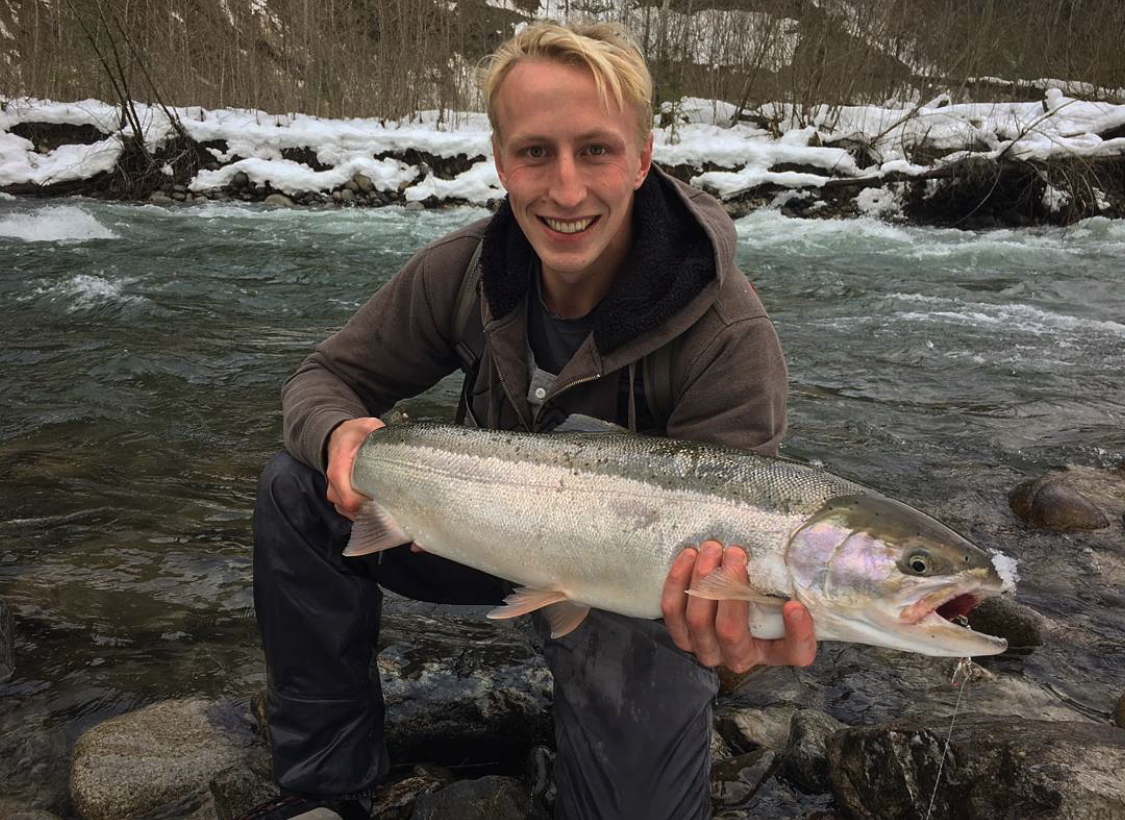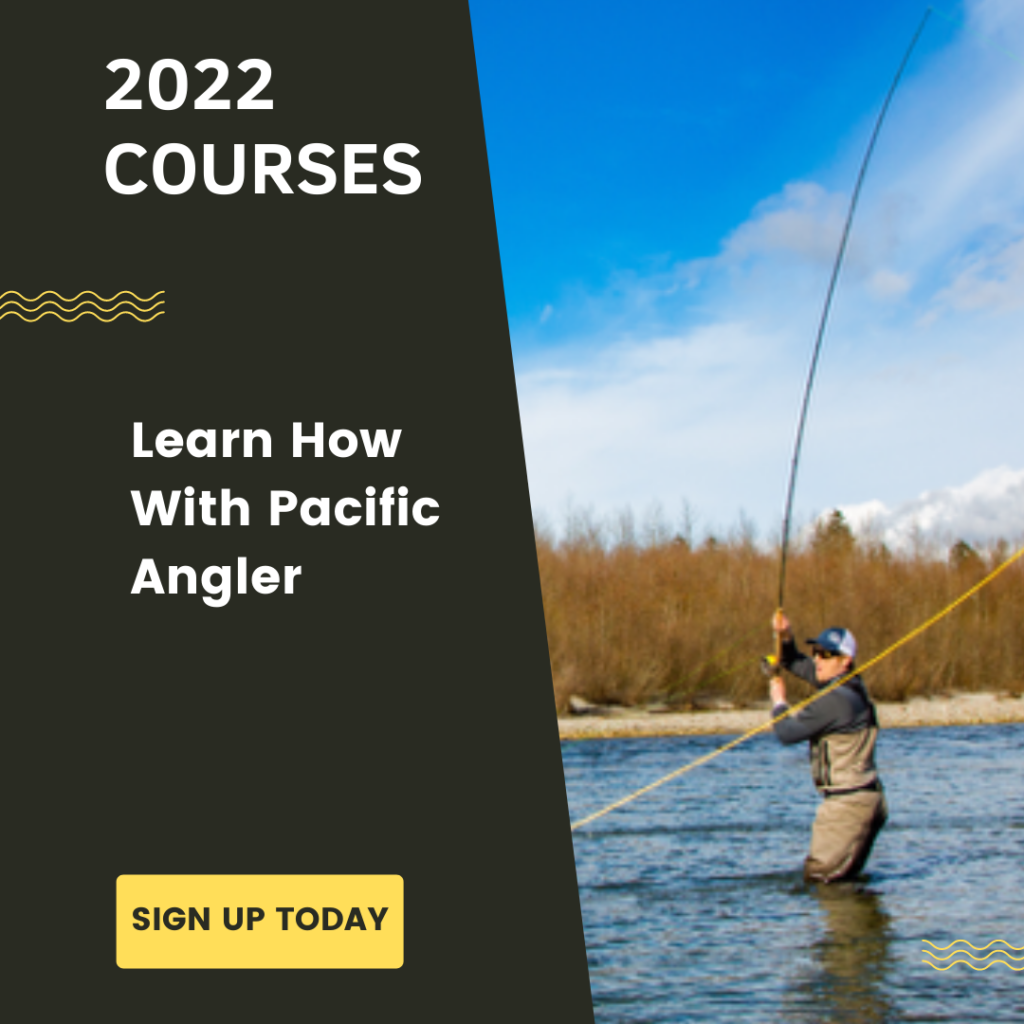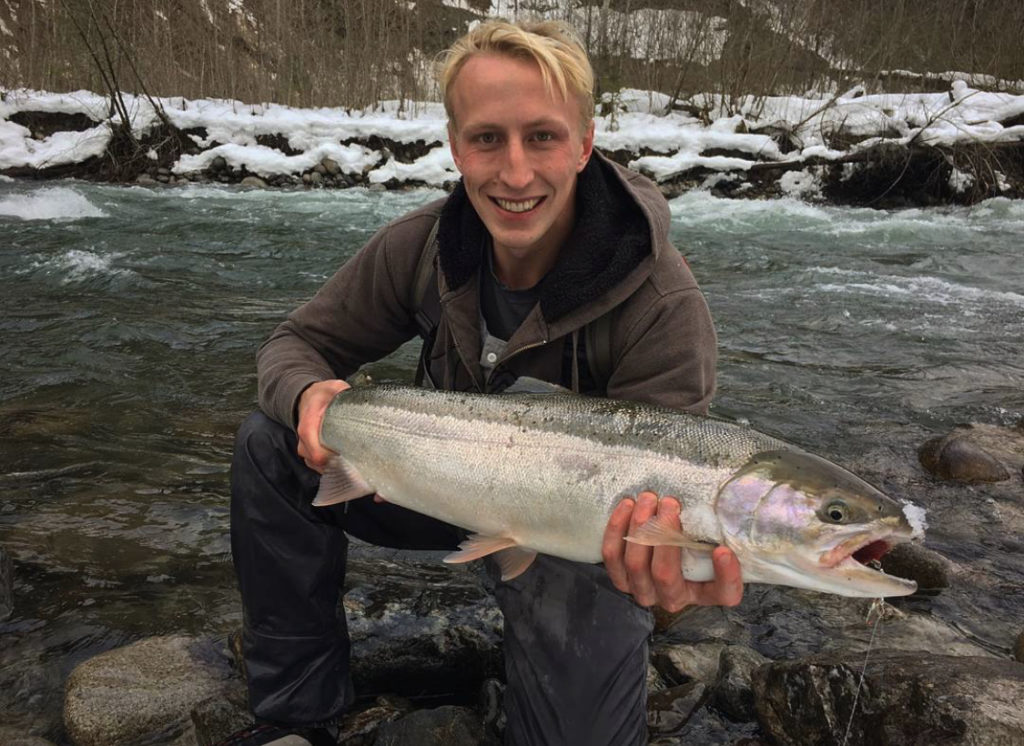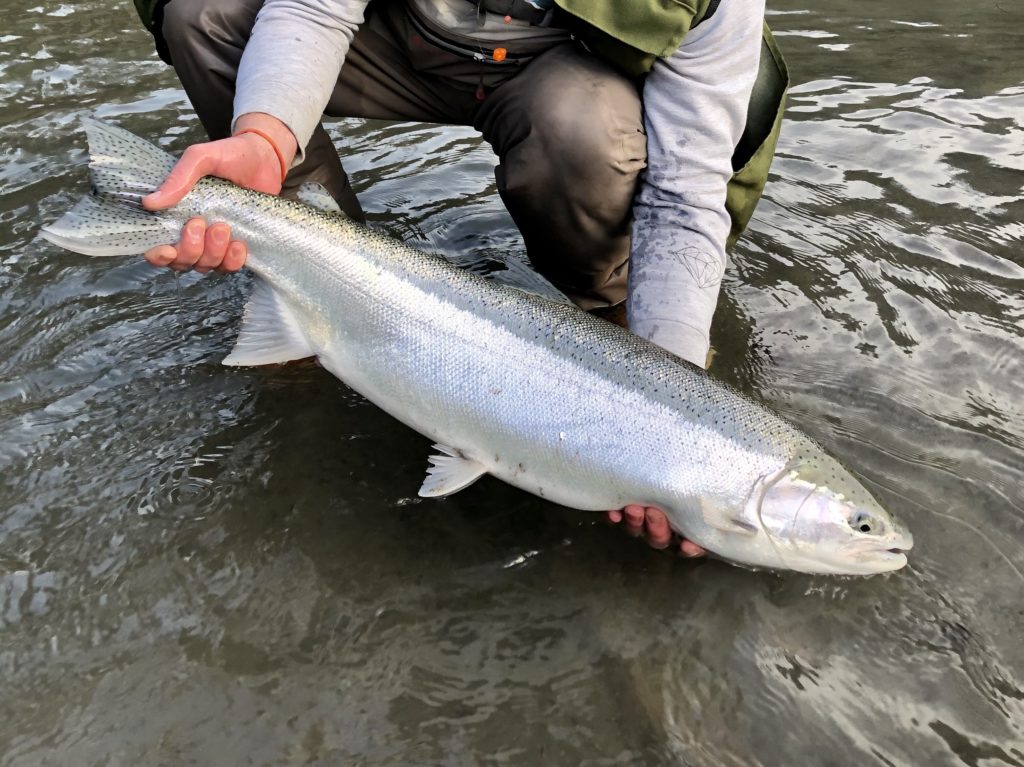OUTLOOK
Things are settling down for BC after the storms of the last month and Christmas time is upon us. We could all use a little Christmas cheer right now but there is also something else that comes at this time of year that’s good for cheering things up.
THE BEST OF FISHING PICTURES COMPETITON IS BACK!
It’s time to look back on 2021. All the great trips, all the great memories and all the fish pictures!
We are running the best of fishing pictures 2021 contest again this year with gift cards to the store for the best pictures in a number of categories.
Matt has details on the competition in the video version of the report including the categories for submission and the prizes. We also have more details below. Check it out this week’s Friday Fishing Report Video here:
On the fishing front, we are starting to think steelhead. With this in mind we have a steelhead gear fishing primer from Sterling and Taylor looks at the valley rivers for conditions after the floods.
We also are revisiting our What’s in Your Steelhead Fly Box video. It’s an oldy but a goody for building a well-rounded steelhead box for all of our fly anglers.
Last, but not least, fishing for the egg eaters up Squamish way as well as the winter chinook fishing continues to be good. Note the details below in the Squamish report.
On to the report!
CLASSES AND COURSES
Please note that our 2022 Course Schedule is now out. From beginners to experts looking to hone their craft we have the course for you!
Check out our full course listing HERE and call the shop (604.872.2204) to reserve your spot today.
Many of our on the water courses fill up quickly so don’t delay!
One or more of these courses might just be the perfect Christmas gift!
INDUSTRY EVENTS AND UPDATES
BEST of 2021 Fishing Picture Contest Details
Here are all of the details for our Best of 2021 Fishing Picture Contest Details!
We will be picking winners within the categories listed below. Each winner will review a $50 Gift card to use on anything at Pacific Angler! Winners will be announced in the December 31st edition of the Friday Fishing Report as well as on our YouTube Channel.
Categories:
– Best Fish Picture – anything with a fish in it. Prize: $50 Gift Card
– Best Fishing Picture – anything related to the act of fishing. Prize: $50 Gift Card
– Best fishing Scenery Shot – amazing shots of the wonderful world we get to fish in. Prize: $50 Gift Card
– Best of Kids Fishing (under 16) – we want to see how the next generation is enjoying their time on the water. Prize: $50 Gift Card
Submission Instructions:
Pictures will be accepted via email only! Email your entries to photocontest@pacificangler.ca Each entry must include a brief description and the category you best think it fits
Contest is open December 10, 2021 – December 30, 2021.
Submission Details:
Parents or Legal Guardian must submit photos for participants under 18.
By submitting your photos, you give Pacific Angler permission to use your photo in the Friday Fishing Report, our social media feeds, and/or Pacific Angler TV on YouTube. At any time, you may revoke this authorization by notifying Pacific Angler in writing to info@pacificangler.ca This written revocation will not affect the actions taken prior to this notification.
FRESHWATER FISHING REPORTS
Post Storm Valley River Update
Now that we’ve had a bit of a break from the rain and southern BC has begun to pick up the pieces from the catastrophic weather events of last month, we can start to take a step back and have a look at how some of the rivers in the valley are faring after their multiple blowouts.
Now that we’ve had a bit of a break from the rain and southern BC has begun to pick up the pieces from the catastrophic weather events of last month, we can start to take a step back and have a look at how some of the rivers in the valley are faring after their multiple blowouts.
I’ll be looking at this from more of a fish’s or an angler’s point of view, so forgive me if it feels like I’m ignoring the disastrous effect this has had on our local communities and the folks who live in them – I certainly understand the gravity of the situation for those affected and offer my deepest sympathies to all those involved.
There are a lot of negatives. Near-record flows in most systems scoured tons of gravel, shifted riverbeds, triggered clay slides, turned trees into rafts and even washed houses and cars away. The survival of the millions of salmon eggs in the gravel is in serious question, as is the fate of tens of thousands of juvenile coho, chinook, steelhead and sockeye that were rearing in streams or lakes before migrating to the ocean.
Aquatic invertebrates and insects will certainly have been negatively affected by the scouring and silting, dykes and other critical infrastructure have been damaged, and countless toxins and pollutants have entered waterways. All this to say, the damage to river ecosystems and in turn salmonid populations, is likely to be significant and much longer-lasting than most people might think… these floods have most likely affected three generations of salmon at once- this year’s brood, last year’s brood, and a number of steelhead and chinook from 2019’s brood that stayed in freshwater for two years. Resident trout, char and whitefish will also have been negatively impacted, although to what degree I’m not sure.
There are a couple positives, at least, in terms of angling, as all of the local rivers have completely changed and most of the runs people were fishing this season are unrecognizable. Think of this as a reset; people who want to find fish next year will have to put in some time to find good water instead of simply flogging the same productive water as years prior.
Another positive is that some systems went ahead and “diversified” their channels during the blowout- this meaning that instead of a single channel, the river branches out into several channels within its floodplain, with lots of log-jams and other structure being created during the high water. Diversification is a good thing because it exponentially increases the habitat diversity within a system, which in turn provides more places for fish- adult, juvenile and resident, to live… rivers were wide and meandering in the days before dykes and channelization, after all.
It has also become clear that reasonable numbers of late-run coho and chum survived and successfully spawned in small back-channels and off-channels that were mostly sheltered from the floods, which attests to how critical these habitats are for salmon.
Our buddy Rodney over at Fishing with Rod has posted a couple good in-depth videos to his YouTube channel regarding the implications of this year’s flooding. He’s a bit more or a glass-half-full kind of guy than I am, so you’ll want to see what he has to say if you’re looking for some more optimism! Nature can and will find a way.
BC FLOOD 2021! Can Salmon Survive in A BIG FLOOD EVENT? | Fishing with Rod
A Glimmer of Hope for Salmon after BC’s Devastating Flood | Fishing with Rod
In terms of current conditions, most valley rivers have more or less returned to something close to a “normal” level, with the exceptions being most systems that are fed by a large lake- such as the Vedder/Chilliwack or Harrison. The sheer volume of water in the water table has kept these lakes quite high for an extended period of time, and as such, their associated rivers are still running quite high- the Vedder is still at 2.5 meters, which is what I would consider to be blown out… it’s been over 2 meters since November 25th. In terms of fishing, the salmon runs in most of the valley rivers are pretty much done, with the exception of a few systems that are known for their late runs of coho that can persist into January but leaving these fish to do their thing is recommended.
Steelheading won’t really pick up until late December/early January, although I wouldn’t be terribly surprised if one or two early fish have found their way into the Vedder at this point. Now is a good time to take stock of the gear you have and stock up on the essentials for when steelhead season actually gets underway.
We’ve got everything you’ll need, so drop in to the ship if you need gear or advice, as we’re more than happy to help! Sterling has a great overview of steelhead fishing below if you are planning to give it a go this year or just want to brush up on the concepts.
Good Luck!
Taylor Nakatani
Squamish River Fishing Report
There is another storm coming today, as you read the report, but temperatures are going to be low and precipitation is expected to come as snow. Low temps will persist into next week so we expect river levels to hold. Remember to check temps in the forecast before you go out because, if it warms up, this precipitation could cause level issues but as it stands now that is not expected.
Snow does pose its own issues. Make sure to check road conditions and packing a shovel in a off road capable vehicle will be smart if you are heading to the upper river.
Pale egg imitations are usually best in clear conditions and making sure you have a perfect drift is important whether you are fly fishing or gear fishing at this time of year.
Check out this mending video if you plan to tackle this fishery with the fly rods.
Good luck,
Matt Sharp
Gear Fishing for Steelhead Primer
Success all starts with the prep work. You’ll hear it every year, but great scouting plays such an important role in finding fish. Hopefully, the heavy rains are behind us meaning we really shouldn’t see any more major river structure changes.
Steelhead will sit in different slots on the river depending on water level and the gradient between 1.7m and 1.8m on the Vedder River gauge will make a world of difference. Many anglers often fish the same water repeatedly, regardless of water level, because they’re unsure of where else to try. I’ll always try and get out for at least 2 days in December to go for a hike and cover as much ground as I can. I always plan these trips when the water level is between 1.5m-1.8m, since that’s typically the water level you’ll encounter between January and April. Look for various types of water including runs, riffles, holes, seams, and structure as steelhead will be found in 2-7 feet depths of those various types of water. It’s quite common to find steelhead in the ‘tailouts’.
An often-neglected resource is a fishing journal. It’s not always about recording when you get into fish, but more about what type of water you think is/isn’t worth fishing again at certain water levels and water flow. I can think of many times where I’ve fished a stretch of water that I thought was going to be great and it ended up being disappointing. Sure enough, I look back in my journal from years before and I mentioned the exact same conditions.
Now onto the tackle. The two main methods to catch steelhead with gear are float fishing and spoons/spinners. You will see many experienced anglers pack 2 rods. A longer 10-11ft float fishing rod and a smaller 7-9ft spoon/spinner rod.
For float fishing, I’d recommend using a 20g-30g float, ½ – 1 oz lead weight to match a float, and a 12-24 inch leader. There are many types of lures that work great at catching steelhead and it’s all about finding the tackle that you enjoy fishing the most. Some guys swear by cured roe and the more natural or orange colored roe, which is popular. Some guys swear by the 4-6 inch bubblegum or pink worm. Personally, I swear by a 10-12 mm cherry roe hard bead or orange pearl bead. It’s important to remember that steelheading is not salmon fishing, meaning it’s much more important to cover water than it is to have the ‘perfect’ lure. Other great lure options include soft beads, gooey bobs, wool, float fishing jigs, and Colorado blades. You’ll find that certain lures work better in certain locations and conditions. That’s all part of the learning process. Again, a journal of river conditions, water height, plus the lure that worked or the lure you saw someone else have success with, can pay big dividends over your steelhead career.
For spoons and spinners, it’s all about getting it down to their depth and holding it in the “sweet” spot, 12-20 inches off bottom, during the entire retrieve. A variety of weights and profiles will allow you to change from one depth or speed of water to the next.
It’s important to have a fast or extra fast action rod so you can really feel the ‘thump’ of the spoon or ‘vibration’ of the spinner.
I’ve always done well fishing Prime, sizes 2/5th to 5/8th, and Koho, sz 35-55 spoons in the standard brass, silver, and copper color variations. For spinners, I’m partial to Prime spinners and blue foxes. Blue foxes are naturally built with lighter components so make sure you’re fishing a large enough sized bell to match your preferred water conditions. Blue foxes really thrive in slower water which allows the spinner to sink to the right depth.
People will generally start throwing more spoons/spinners in March when the water temperature jumps up a little bit leading to more active fish but don’t be afraid to throw them even earlier than that. The first fish of the season tend to be elusive but aggressive and a spoon can cover a ton of water fast when scouting.
If you are a Fly Fisherman thinking about steelheading, don’t worry, as we have you covered as well.
A few years ago, Matt did a video for Fishing with Rod, going over his favorite steelhead patterns and a little concept talk on how and why he fishes these patterns. Patterns are ironically not all that important but fly concepts can play a big role in having a fly that will work or simply not work for steelhead.
Check out the video, “What’s in Your Steelhead Box? Dissecting a Steelhead Fly Box” | Learn How with Pacific Angler below
If you want to sit down at the vise after watching some of the general concepts, we have a video on how Matt ties his go-to Choking Black and Blue steelhead pattern here.
Best of luck out there this season and I look forward to seeing you in the shop!
Sterling Balzer





